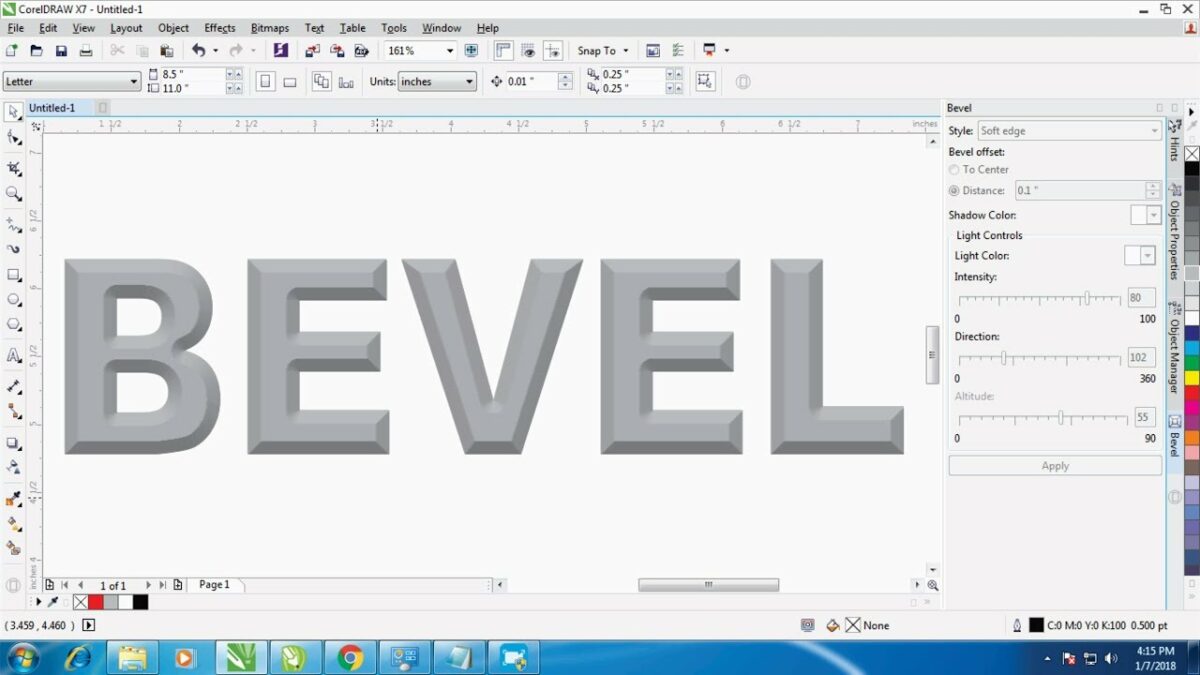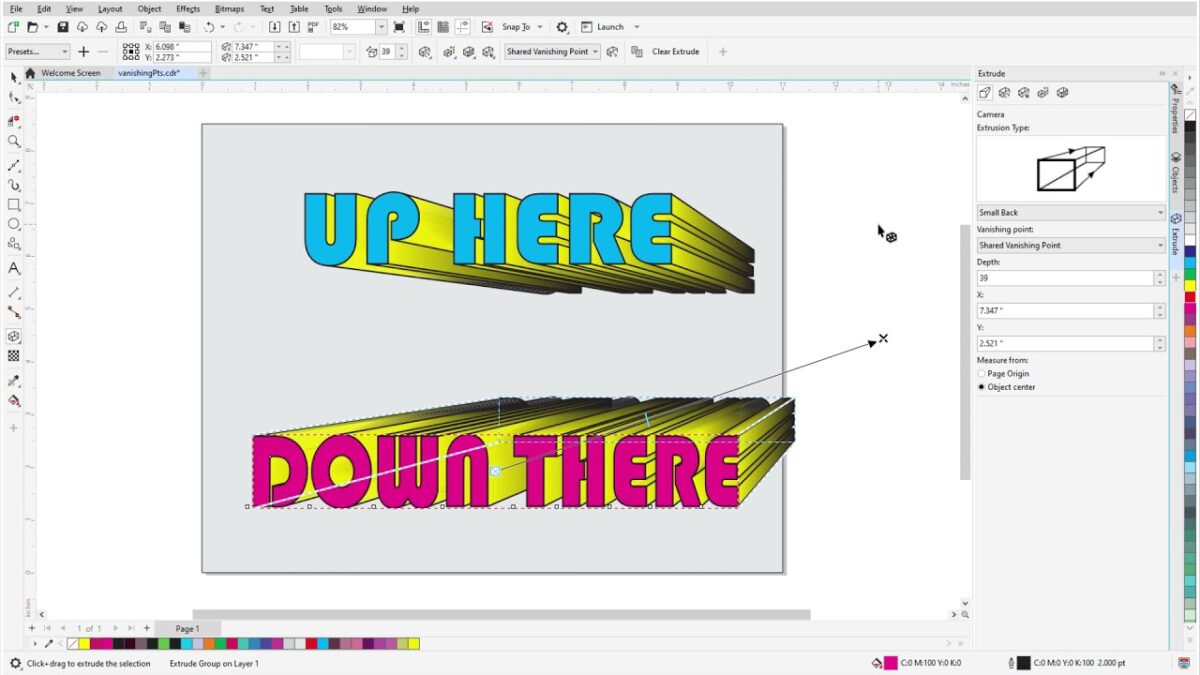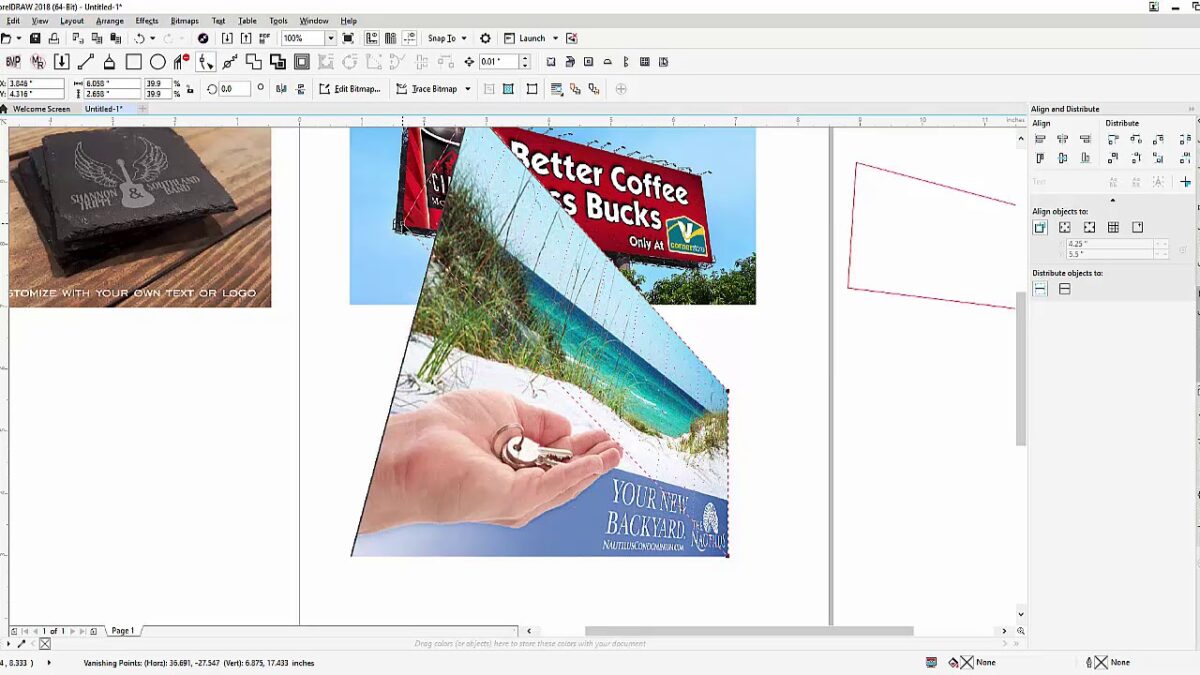Introduction:
In the vibrant realm of graphic design, the quest for visual brilliance often leads designers to seek tools that can add depth and sophistication to their creations. CorelDRAW, a powerhouse in graphic design software, introduces a versatile toolkit, and within it, the ability to create bevel effects stands as a transformative feature. In this extensive guide, we embark on a comprehensive exploration of creating bevel effects in CorelDRAW, unraveling its functionalities, applications, and the transformative impact it brings to the canvas.
Understanding Creating Bevel Effects in CorelDRAW:
- Bevel Effects as Design Sculpture: Creating bevel effects in CorelDRAW is akin to sculpting designs, where designers can carve, contour, and add a three-dimensional quality to their creations. Bevel effects become a powerful tool for storytelling, offering a spectrum of creative possibilities to elevate designs into the realm of visually captivating masterpieces.
- Versatility in Bevel Effect Creation: CorelDRAW’s bevel effect creation offers a versatile range of options, enabling designers to add dimension, create realistic surfaces, and convey a sense of substance within their designs. This toolkit serves as a canvas for creative exploration, allowing for the creation of designs that transcend traditional boundaries.
- Advantages of Creating Bevel Effects: Creating bevel effects provides designers with a host of advantages, including the ability to add realism, generate complex shapes, and enhance the overall visual impact of a composition. These bevel effect creation capabilities serve as a powerful tool for designers seeking to infuse their designs with a sense of sophistication and visual appeal.
Basic Bevel Effect Creation Techniques:
- Simple Shape Beveling: CorelDRAW’s bevel effect creation includes fundamental tools for beveling simple shapes, transforming 2D objects into three-dimensional forms. This technique is ideal for creating basic beveled elements such as buttons, icons, and logos.
- Text Beveling for Elegant Typography: Designers can explore text beveling techniques, elevating standard typography into dynamic, three-dimensional elements. This technique is valuable for creating attention-grabbing headlines, logos, and other text-based design elements.
Dynamic Bevel Effect Enhancements:
- Interactive Real-time Bevel Adjustments: CorelDRAW’s bevel effect creation extends to interactive real-time adjustments, enabling designers to apply and tweak bevel settings dynamically. This dynamic approach fosters experimentation and facilitates on-the-fly refinements.
- Bevel Variations with Color and Material: Designers can leverage color and material features in conjunction with bevel effect creation, allowing for variations in how beveled elements interact with light and shadow. This technique is particularly useful for creating realistic and visually appealing three-dimensional compositions.
Artistic Bevel Effect Manipulations:
- Abstract Bevel Artwork: Creating bevel effects empowers designers to craft abstract bevel artwork, experimenting with unconventional combinations of shapes and surface arrangements. This technique allows for the exploration of intricate and avant-garde design elements.
- Layered Bevel Compositions: Designers can use bevel effect creation tools to craft layered compositions, applying multiple bevel effects to objects to produce visually intriguing designs. This technique adds a multidimensional quality to flat images.
Practical Applications of Creating Bevel Effects:
- Icon and Button Design: Creating bevel effects plays a pivotal role in icon and button design, where adding depth and dimension to user interface elements is crucial. Designers can use these capabilities to craft visually engaging and interactive buttons and icons.
- Logo Design and Branding: In the realm of logo design and branding, creating bevel effects is indispensable for crafting memorable and visually distinctive marks. Designers can use these capabilities to add depth and sophistication to brand identities.
Advanced Bevel Effect Techniques:
- Custom Bevel Effect Creation: CorelDRAW’s advanced bevel effect creation includes tools for crafting custom bevel effects. This advanced technique allows designers to shape unique three-dimensional surfaces that align with the specific requirements of their design.
- Bevel Blending with Real-world Elements: Designers can explore bevel blending techniques by incorporating real-world elements into designs. This advanced method involves seamlessly integrating physical objects or images into beveled compositions.
Customization and Fine-Tuning:
- Control over Bevel Effect Parameters: Designers have granular control over the parameters of created bevel effects, including height, angle, and intensity of the bevel effect. This level of control ensures that designers can precisely customize the impact of bevels on different elements in their designs.
- Real-time Previews: The real-time preview feature in CorelDRAW enables designers to observe the impact of created bevel effects instantly. This iterative process facilitates experimentation and allows designers to make informed decisions about the application of bevel effects.
Combining Bevel Effects with Other Tools:
- Integration with CorelDRAW Tools: Created bevel effects seamlessly integrate with other CorelDRAW tools and functionalities. Designers can combine the application of bevel effects with vector elements, text, and other design components to create cohesive and visually striking compositions.
- Layering and Masking Techniques: CorelDRAW allows designers to use layering and masking techniques in conjunction with created bevel effects. This synergy enables the creation of complex visual compositions with seamless transitions and layered bevel effects.
Collaboration and File Sharing:
- Compatibility Across Versions: When collaborating on projects involving created bevel effects, designers should ensure compatibility across different versions of CorelDRAW. This guarantees that bevel effects are applied consistently, regardless of the software version used.
- Exporting Designs with Bevel Effects: Designers can export designs with applied bevel effects, ensuring that the dimensional depth and sophisticated surface detailing are retained when sharing files with clients, collaborators, or across different platforms.
Best Practices and Tips:
- Purposeful Bevel Effect Application: Successful application of bevel effects involves purposeful application. Designers should consider the overall design context and narrative, using bevel effects to enhance specific elements and contribute positively to the visual storytelling.
- Experimentation with Bevel Variations: Experimenting with different bevel variations can lead to unexpected and visually appealing results. Designers are encouraged to explore diverse bevel effects and experiment with their combinations to discover unique and captivating surface arrangements.
Conclusion:
Creating bevel effects in CorelDRAW transforms designs into visually rich compositions, adding a touch of sophistication and dimensionality. From user interface elements to brand identities, bevel effect creation capabilities offer designers the opportunity to infuse their creations with a sense of depth, realism, and refined detailing. As the design landscape continues to evolve, creating bevel effects in CorelDRAW stands as a testament to the software’s commitment to providing designers with tools that inspire innovation and imaginative expression. Mastering the art of creating bevel effects invites designers to explore a realm where every design becomes a sculpted masterpiece, where every bevel is a stroke of dimensional creativity.


